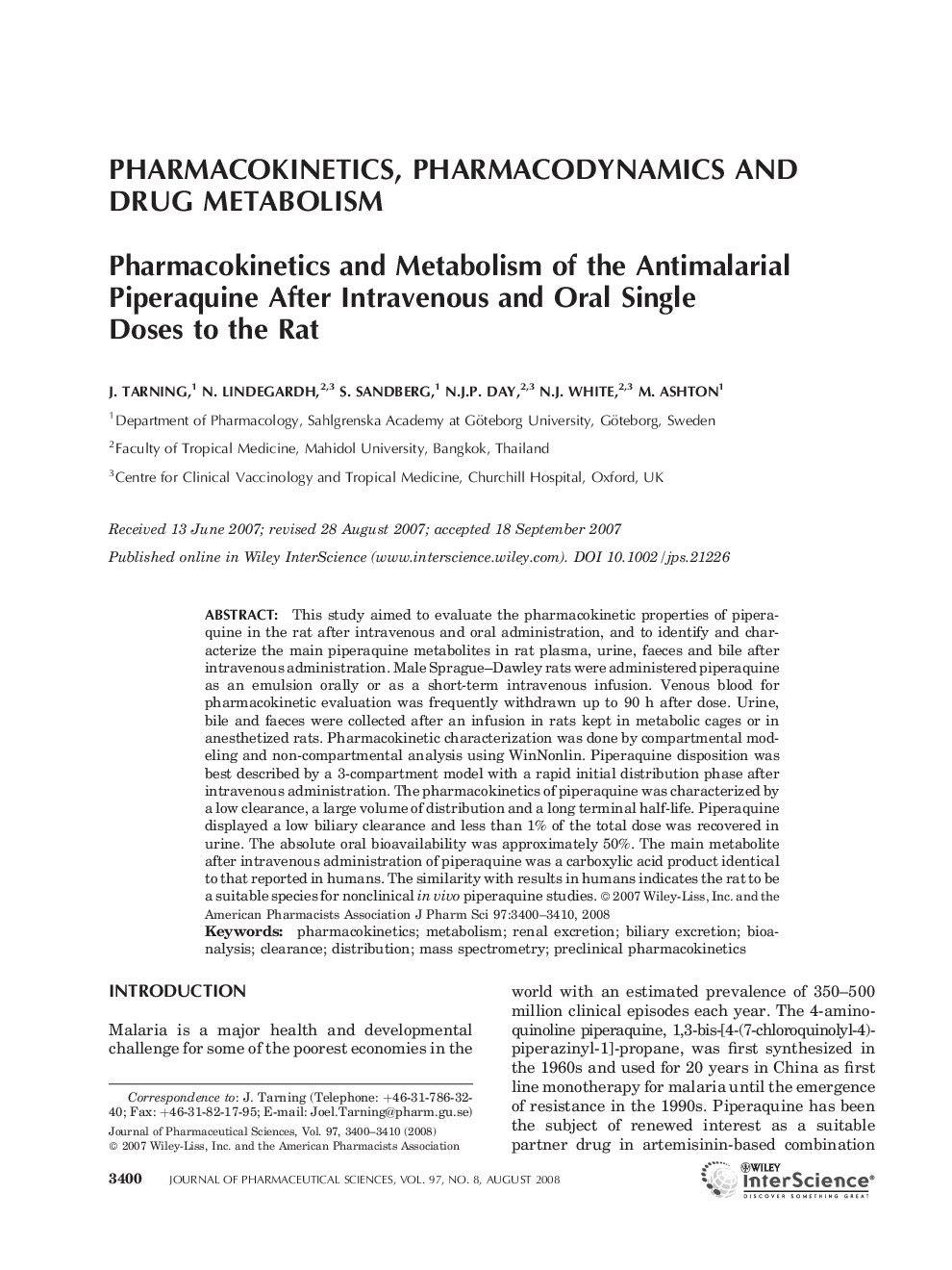| Article ID | Journal | Published Year | Pages | File Type |
|---|---|---|---|---|
| 2487373 | Journal of Pharmaceutical Sciences | 2008 | 11 Pages |
Abstract
This study aimed to evaluate the pharmacokinetic properties of piperaquine in the rat after intravenous and oral administration, and to identify and characterize the main piperaquine metabolites in rat plasma, urine, faeces and bile after intravenous administration. Male Sprague-Dawley rats were administered piperaquine as an emulsion orally or as a short-term intravenous infusion. Venous blood for pharmacokinetic evaluation was frequently withdrawn up to 90Â h after dose. Urine, bile and faeces were collected after an infusion in rats kept in metabolic cages or in anesthetized rats. Pharmacokinetic characterization was done by compartmental modeling and non-compartmental analysis using WinNonlin. Piperaquine disposition was best described by a 3-compartment model with a rapid initial distribution phase after intravenous administration. The pharmacokinetics of piperaquine was characterized by a low clearance, a large volume of distribution and a long terminal half-life. Piperaquine displayed a low biliary clearance and less than 1% of the total dose was recovered in urine. The absolute oral bioavailability was approximately 50%. The main metabolite after intravenous administration of piperaquine was a carboxylic acid product identical to that reported in humans. The similarity with results in humans indicates the rat to be a suitable species for nonclinical in vivo piperaquine studies.
Keywords
Related Topics
Health Sciences
Pharmacology, Toxicology and Pharmaceutical Science
Drug Discovery
Authors
J. Tarning, N. Lindegardh, S. Sandberg, N.J.P. Day, N.J. White, M. Ashton,
